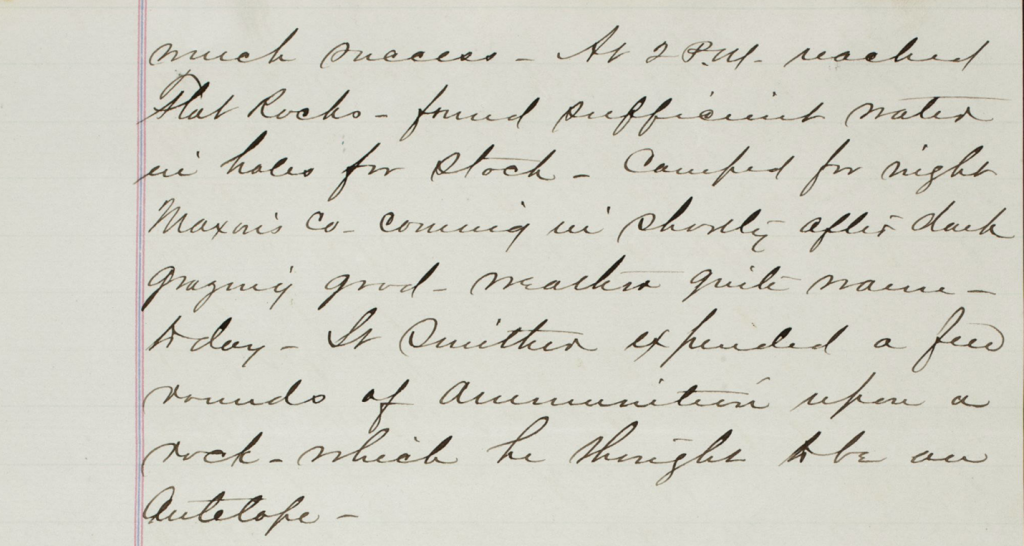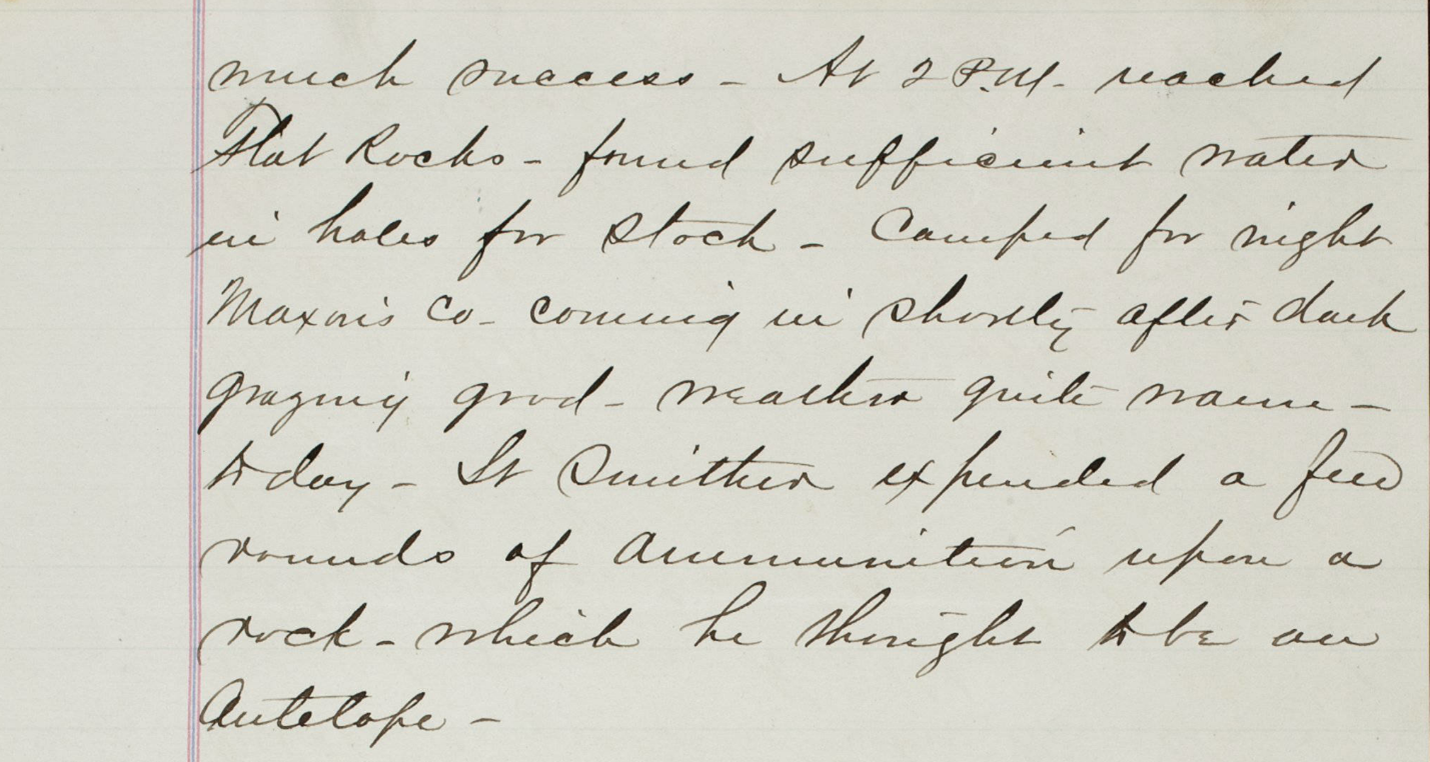Materials – Available for Download in the Downloads Tab:
- PDF and Microsoft Word versions of the Skills Lesson
Explain to students that many of the primary sources they see in textbooks and history books are transcriptions of handwritten documents. A transcription is the text of a primary source such as a letter or diary—or even the audio of an oral history—typed up so that it is easier to read.
Transcribing Letters
This image is from a diary written by C. S. Hodges during a trip in 1878-1879.

Here is what a transcription of this passage looks like:
. . . At 2 P.M. reached Flat Rocks – found sufficient water in holes for stock – . . . Maxon’s Co. coming in shortly after dark, grazing good – weather quite [?] today – Lt Smither expended a few rounds of ammunition upon a rock – which he thought to be an Antelope [sic]
Transcribing Conventions
Explain to students that there are certain conventions that transcribers use. These are symbols, marks, and other things that show the reader certain things about the original, about the transcription, and about the differences between them.
- [?] When the transcriber can’t figure out what a word is, they may use square brackets with a question mark in its place. [?] can also appear after a word a transcriber guess at but isn’t certain of.
- [unclear] Instead of [?], sometimes transcribers use the word “unclear” in square brackets when they can’t figure out what a word is.
- [word] When the original writer crossed out a word, the transcriber may put it in square brackets. Sometimes people who quote primary source use square brackets to indicate that they have inserted a word or words to clarify meaning.
- [*words] If the original writer added a note in the margin, the transcriber may put it in square brackets with an asterisk before it.
- [sic] Transcribers generally do not fix spelling, grammatical errors, or punctuation. Sometimes, though, they want to point out that the error is in the original. That’s when they use [sic].
- Ellipsis When you see three periods in a row, something has been left out.
- The ellipsis may show that there was more before the transcription started or more after it ended.
- People who quote primary source texts often leave out sentences or parts of sentence that they think are beside the point. They insert an ellipsis (or should) to show that there is more there in the original.
- If you see four periods, that means there was a period at the end of a sentence before the ellipsis started.
Download the following materials below:
- PDF and Microsoft Word versions of the Skills Lesson



